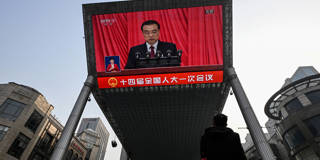China’s slowing economic growth is a reflection of a new policy approach by the central government. Instead of chasing rapid growth rates at a time when the world economy is sputtering, China’s government is emphasizing job creation and macroeconomic stability.
SHANGHAI – After Chinese GDP grew by only 3% in 2022, one would have expected the government to set a growth target of at least 6% for this year. In fact, virtually no market forecast projects a lower rate. Yet, at last month’s National People’s Congress, outgoing Premier Li Keqiang revealed in his final Government Work Report that the government was aiming for growth of about 5%, the lowest target of his tenure.

SHANGHAI – After Chinese GDP grew by only 3% in 2022, one would have expected the government to set a growth target of at least 6% for this year. In fact, virtually no market forecast projects a lower rate. Yet, at last month’s National People’s Congress, outgoing Premier Li Keqiang revealed in his final Government Work Report that the government was aiming for growth of about 5%, the lowest target of his tenure.